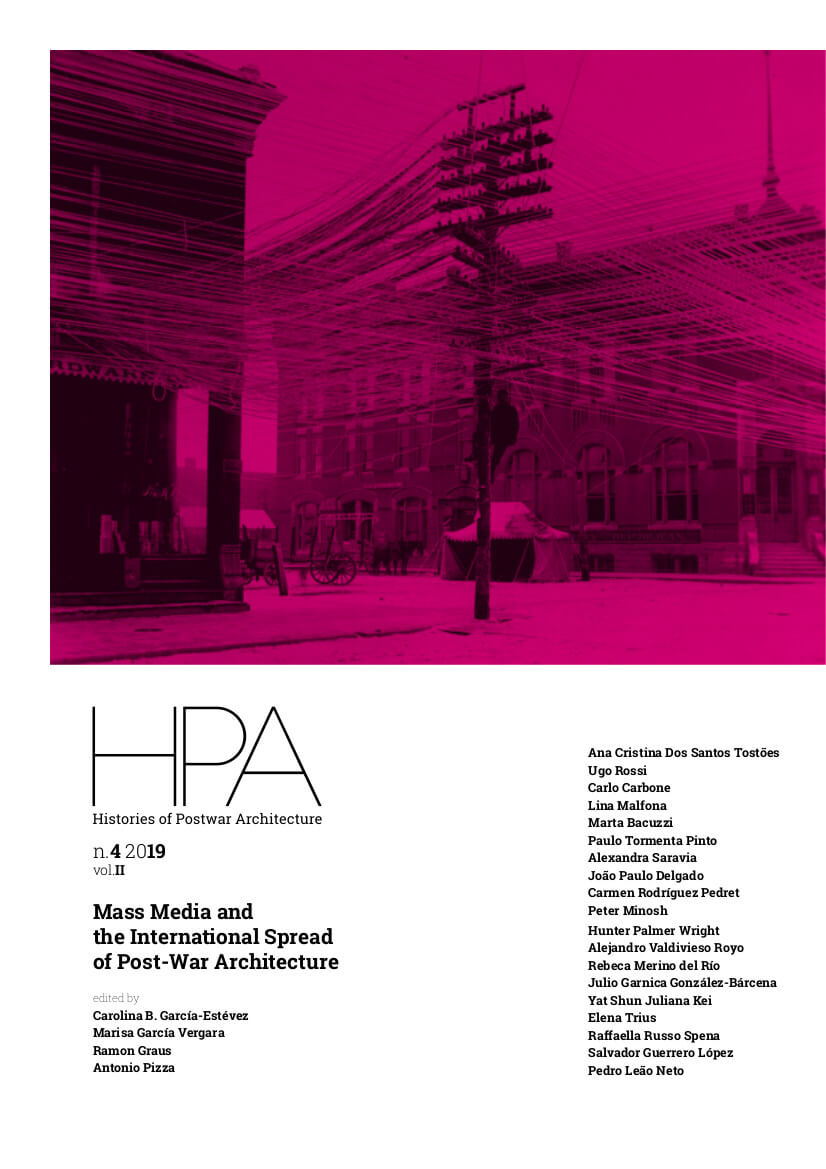Spanish Post-War Architecture in Portuguese Magazines (1946 – 1970) – the cases of A Arquitectura Portuguesa & Cerâmica e Edificação (Reunidas) and Arquitectura
DOI:
https://doi.org/10.6092/issn.2611-0075/9835Keywords:
Architectural Media Coverage, Spanish Post-War Architecture, Portuguese Post-War Architecture, Portuguese Architectural MagazinesAbstract
The article deals with the publication of Spanish architecture in Portuguese mass-media during the post-war period. By focusing on two major titles, i.e. the A Arquitectura Portuguesa & Cerâmica e Edificação Reunidas and the Arquitectura magazines, the article traces the architectural, cultural, and political ties, but also the shifts, between the two Iberian countries, in a period that spans from the upsurge of the Spanish Civil War to the outbreak of the 1970s. In other words: from the raise of Franco to the death of Salazar. The article shows that, as early as January 1946, the new Spanish architecture was considered by Portuguese architectural magazines as a relevant subject, namely by the publication of the works authored by the Coderch and Valls team. Cumulatively, the article argues that this importance was linked to the long-lasting and well-documented relationship between Portuguese publishers and the Italian Domus magazine, made thru the patronage of Italian architect Gio Ponti.
Downloads
Downloads
Published
How to Cite
Issue
Section
License
Copyright (c) 2019 Paulo Tormenta Pinto, Alexandra Saraiva, João Paulo Delgado
The copyrights of all the texts on this journal belong to the respective authors without restrictions. Authors grant to the journal a non-exclusive right to publish their work.
This journal is licensed under a Creative Commons Attribution 4.0 International License (full legal code).
See also our Open Access Policy.






